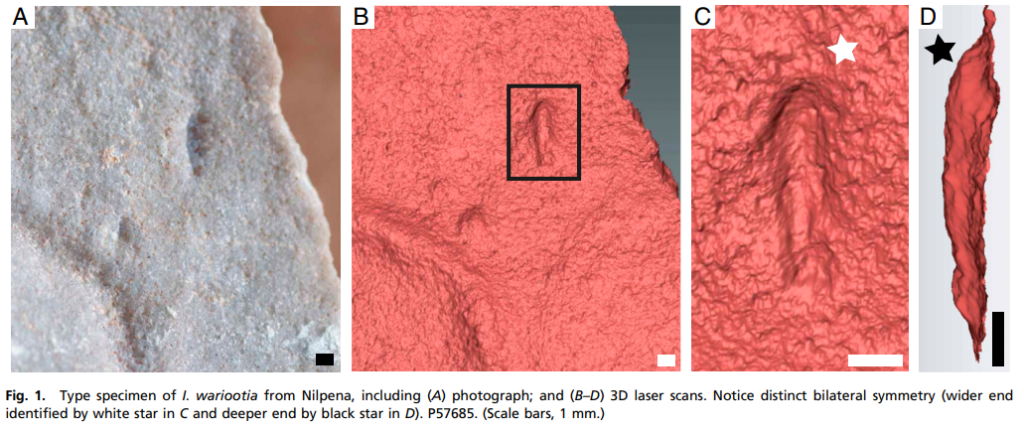A team led by researchers at UC Riversidereports finding the oldest known ancestor of most animals today, humans included. It’s quite tiny.

The new species has been christened Ikaria wariootia in honor of Australia’s original inhabitants. The genus name comes from Ikara (“meeting place”) in the Adnyamathanha language, and it’s their name for a group of mountains known in English as Wilpena Pound. The species name comes from the Warioota Creek.
All in all, the organism is a tiny wormlike creature, but it is the earliest one we’ve found that has a front and a back side (‘bilaterianism’), two symmetrical sides (left and right), and a gut connected to openings at the front and back. In essence, this organism set the blueprint for how most animals are structured today.
Trendsetter
“This is what evolutionary biologists predicted,” said Mary Droser, a professor of geology and co-author of the paper. “It’s really exciting that what we have found lines up so neatly with their prediction.”
The first multicellular organisms to spawn on Earth, such as sponges and algae, are collectively known as the Ediacaran Biota. While it was undoubtedly rich, very few animals living today can find their roots in these animals. One which can is a lily pad-shaped creature known as Dickinsonia — it lacks basic features we associate with animals today, such as a mouth or gut.
Most animals today employ bilateral symmetry, i.e. they have a right and a left side that are mirrored. This property was first developed after the Ediacaran Biota, and the blueprint it set down has been in use ever since, from worms to dinosaurs to humans.
Scientists have suspected that burrows found in 555 million-year-old Ediacaran Period deposits in Nilpena, South Australia, were made by bilaterian animals, perhaps even the first ones. Since no sign of any of their fossils could be seen, it remained just a hypothesis.
But Scott Evans , a recent doctoral graduate from UC Riverside and Prof. Droser noticed tiny, oval impressions near some of the burrows. With funding from a NASA exobiology grant, they analyzed them using a three-dimensional laser scanner, finding the shape of a cylindrical body with a distinct head and tail and faintly grooved musculature. Based on the impressions, the animals ranged between 2-7 millimeters long and about 1-2.5 millimeters wide, being roughly the size of a grain of rice.
“We thought these animals should have existed during this interval, but always understood they would be difficult to recognize,” Evans said. “Once we had the 3D scans, we knew that we had made an important discovery.”
“Burrows of Ikaria occur lower than anything else. It’s the oldest fossil we get with this type of complexity,” Droser adds. “Dickinsonia and other big things were probably evolutionary dead ends.”
The tiny animal was very complex by the standards of its day, the team explains. It likely lived by burrowing between layers of well-oxygenated sand on the seafloor where it would use its rudimentary sensory organs to find food. They have distinct front and rear ends, as indicated by a sloping body that helps direct movement. V-shaped ridges in the burrows suggest that the animal moved by contracting muscles across its body like a worm
The paper “Discovery of the oldest bilaterian from the Ediacaran of South Australia” has been published in the journal PNAS.









